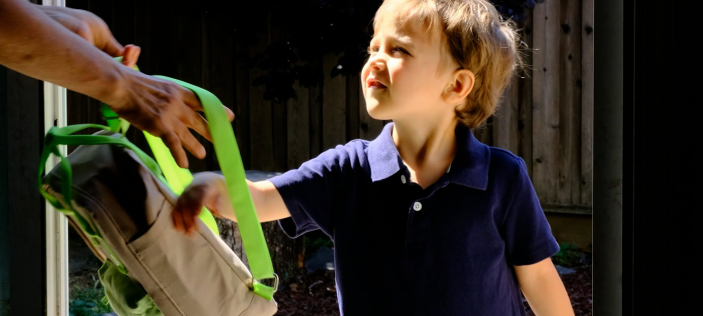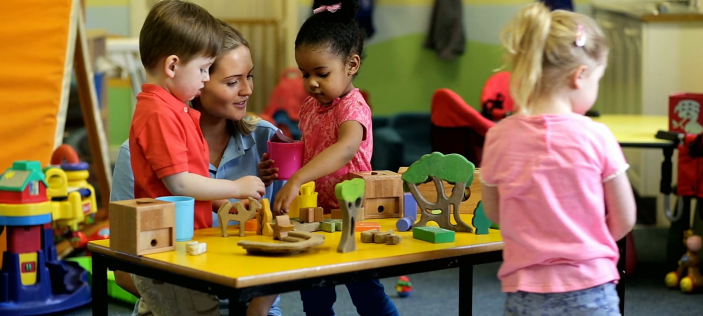The Early Years Foundation Stage (EYFS) provides the essential building blocks for lifelong learning, wellbeing and future success. For school governors, understanding the unique nature and significance of the EYFS is crucial to fulfilling your strategic role and securing the best outcomes for children. Decisions made during this formative period can profoundly influence children's future attainment, behaviour and engagement with education.

Why Early Years matters
The EYFS covers the period from birth to age five, with Reception being the final year before Key Stage 1. This phase is characterised by rapid cognitive, emotional and physical development. Children learn best through play, exploration and meaningful interactions with adults and peers. The EYFS is not just preparation for formal schooling; it is a distinct phase with its own pedagogy and priorities.
Research consistently shows that high-quality early education improves outcomes, especially for children experiencing disadvantage. According to the Education Endowment Foundation (EEF), early intervention can narrow the attainment gap before it becomes entrenched. Children who start school with strong foundations in language, social skills and emotional regulation are more likely to thrive academically and socially.
Key responsibilities for governors
Governors are not expected to be Early Years experts, but they do play a vital role in ensuring that provision is high-quality, inclusive and aligned with the school’s strategic vision.
1. Understand the EYFS framework
The EYFS statutory framework sets out the standards for learning, development and care. It includes:
- Seven areas of learning: These are divided into three prime areas (Communication and Language, Physical Development, Personal, Social and Emotional Development) and four specific areas (Literacy, Mathematics, Understanding the World, Expressive Arts and Design).
- Characteristics of Effective Learning: These describe how children learn through playing and exploring, active learning and creating and thinking critically.
- Assessment requirements: These include the Reception Baseline Assessment (RBA), completed within the first six weeks of school, and the Early Years Foundation Stage Profile (EYFSP), which summarises each child’s development at the end of Reception.
Governors are likely to find it helpful to be familiar with these elements to understand how the school supports early development and prepares children for Year 1.
2. Support and challenge leadership
Governors could engage with school leaders to ensure that the EYFS is well-led and resourced. Key questions might include:
- Is the curriculum ambitious and tailored to the needs of the cohort?
- How are staff supported to deliver high-quality teaching?
- What strategies are in place to identify and support children with SEND or those at risk of underachievement?
- How is professional development prioritised for EYFS staff?
Effective governance involves both support and challenge, ensuring leaders are held accountable while recognising the unique demands of early years teaching.
3. Monitor outcomes and progress
Early Years data provides valuable insights into children’s future outcomes and the quality of Early Years provision. Governors should be aware of:
- EYFSP outcomes: In 2024/25, 68.4% of children nationally achieved a Good Level of Development (GLD), a slight increase from the previous year.
- Trends over time: Are outcomes improving? Are there significant gaps between groups (e.g., boys vs. girls, children eligible for FSM vs. children who are not eligible for FSM?)
- Use of data: How does the school use assessment information to inform teaching, curriculum, interventions and resource allocation?
Governors should ensure that data is used thoughtfully to support children’s development and improve their future outcomes.
4. Ensure safeguarding and welfare
The EYFS includes specific safeguarding and welfare requirements. Governors and leaders must ensure that:
- policies are up to date and reflect statutory guidance
- staff are trained in safeguarding, paediatric first aid and behaviour management in line with the requirements detailed in the statutory framework
- the learning environment is safe, inclusive and promotes wellbeing.
Children in the EYFS are particularly vulnerable and safeguarding must be a top priority. Governors should also consider how the school supports children’s mental health and emotional development.
5. Champion Early Years in strategic planning
Early Years should be central to the school’s vision and development plan; it should not be an add-on. Governors can model this through:
- advocating for investment in EYFS resources, staffing and CPD
- ensuring preschool, nursery and Reception are included in whole-school priorities, such as curriculum development or behaviour policy
- promote parental engagement, recognising that families are key partners in early education.
Strategic decisions such as staffing structures, budget allocations, and school improvement plans should reflect the importance of the EYFS.

Questions governors might ask
To support effective oversight, governors might consider asking:
- How does the EYFS curriculum reflect the needs of our children?
- What does high-quality teaching look like in Reception? Nursery? Two-year old provision?
- How are children’s starting points assessed and built upon?
- What support is in place for children not meeting expectations?
- How do we ensure smooth transitions into Year 1?
These questions help governors engage meaningfully with EYFS provision and ensure it aligns with the school’s broader goals.
Updates to the EYFS Framework – September 2025
From 1 September 2025, new versions of the EYFS statutory framework will come into force for group/school-based providers. These updates build on previous reforms and aim to strengthen safeguarding, clarify qualification requirements and support the expansion of childcare entitlements.
Key Changes for school governors to be aware of:
1. Strengthened safeguarding requirements
- Safer recruitment: Providers must now obtain references and include procedures in safeguarding policies to ensure only suitable individuals are recruited.
- Child absence follow-up: New expectations require providers to follow up on prolonged absences and hold additional emergency contact details.
- Safer eating practices: New requirements aim to reduce risks during mealtimes.
- Privacy and safeguarding balance: Amendments ensure children’s privacy during nappy changing and toileting is considered alongside safeguarding needs.
- Whistleblowing support: Providers must have clear procedures to support staff in raising concerns.
2. Safeguarding training criteria
- A new annex outlines expectations for safeguarding training, including how it is delivered and how practitioners are supported to apply it in practice.
3. Paediatric First Aid (PFA) for students and trainees
- Early Years students and trainees must now have PFA training to be counted in staff:child ratios at the level below their qualification level.
4. Clarification of qualification requirements
- The framework now clearly defines which qualifications count towards Level 6 staff:child ratios, helping schools ensure compliance and appropriate staffing.
These changes are designed to improve safety, support workforce development and ensure consistency across settings. Governors should ensure that school leaders are aware of the new requirements and have plans in place to implement them effectively.





